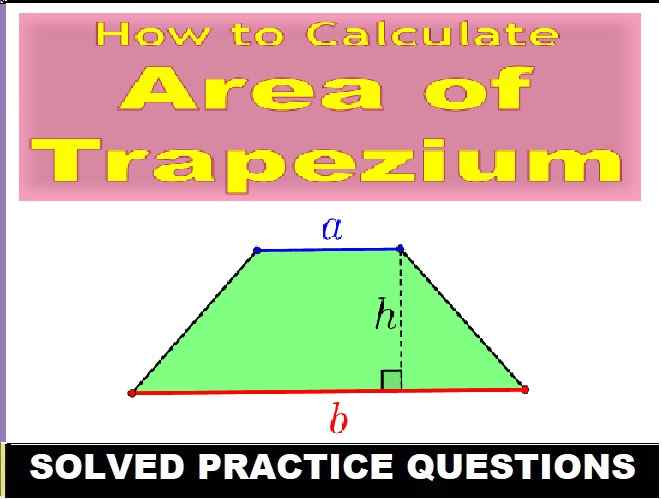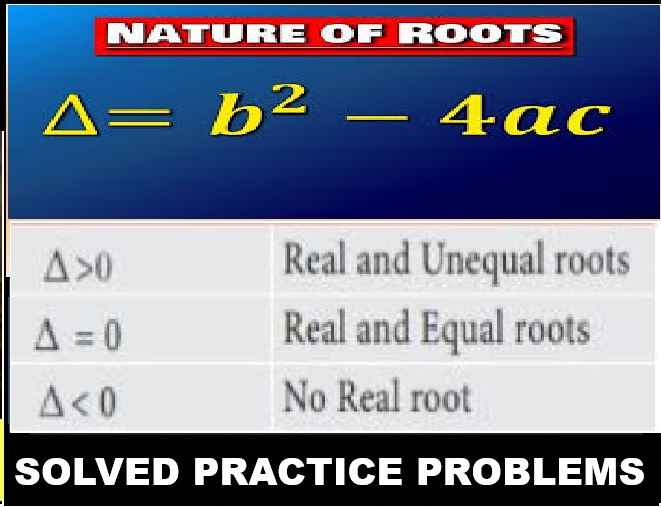MCQ Electrochemistry Class-12 ISC Chapter-3 Chemistry Question Objective Type . Chemistry of Chapter-3 Electrochemistry for your Semester 1 Exam of Council. These MCQ / Objective Type Questions is based on reduced syllabus according 2021-22 session on bifurcated pattern. Visit official website CISCE for detail information about ISC Board Class-12 Chemistry
MCQ of Chapter-3 Electrochemistry ISC Class-12 Question Objective Type
| Board | ISC |
| Class | 12th (XII) |
| Subject | Chemistry |
| Chapter-3 | Electrochemistry |
| Syllabus | on bifurcated syllabus (after reduction) |
| Session | 2021-22 |
| Topic | MCQ / Objective Type Question |
MCQ / Objective Type Question of Ch-3 Electrochemistry Class-12 ISC Chapter-3
(a) Velocity of K+ is greater than that of NO−3.
(b) Velocity of NO−3 is greater than that of K+.
(c) Velocity of both K+ and NO−3 are nearly same
(d) KNO3 is highly soluble in water.
[su_spoiler title=”Answer” style=”fancy” icon=”caret”]Correct Answer :(c) Velocity of both K+ and NO−3 are nearly same
[/su_spoiler]
Question 5: For the electro-chemical cell:
M| M+|| X–| X, E0𝑀+,𝑀 = 0.44 V and E0𝑥,𝑥− = 0.33 V
From the data one can deduce that
(a) M+ X → M+ + X– is the spontaneous change
(b) M+ + X– → M + X is the spontaneous reaction
(c) Ecell = 0.77 V
(d) Ecell = -0.77 V
[su_spoiler title=”Answer” style=”fancy” icon=”caret”]Correct Answer :(b) M+ + X– → M + X is the spontaneous reaction
[/su_spoiler]
Question 6: Galvanised iron sheets are coated with
(a) Carbon
(b) Copper
(c) Zinc
(d) Nickel
[su_spoiler title=”Answer” style=”fancy” icon=”caret”]Correct Answer :(c) Zinc
[/su_spoiler]
Question 7: How many coulombs are required for the oxidation of 1 mole of H2O to O2?
(a) 1.93 × 105 C
(b) 9.65 × 104 C
(c) 3.86 × 105 C
(d) 4.825 × 105 C
[su_spoiler title=”Answer” style=”fancy” icon=”caret”]Correct Answer :(a) 1.93 × 105 C
[/su_spoiler]
Question 8: Rust is a mixture of
(a) FeO and Fe (OH)3
(b) FeO and Fe (OH)2
(c) Fe2O3 and Fe (OH)3
(d) Fe3O4 and Fe (OH)3
[su_spoiler title=”Answer” style=”fancy” icon=”caret”]Correct Answer :(c) Fe2O3 and Fe (OH)3 [/su_spoiler]
Question 9: If limiting molar conductivity of Ca2+ and Cl– are 119.0 and 76.3 S cm2 mol-1, then the value of limiting molar conductivity of CaCl2 will be
(a) 195.3 S cm2 mol-1
(b) 271.6 S cm2 mol-1
(c) 43.3 S cm2 mol-1
(d) 314.3 S cm2 mol-1.
[su_spoiler title=”Answer” style=”fancy” icon=”caret”]Correct Answer :(b) 271.6 S cm2 mol-1 [/su_spoiler]
Question 10: Fused NaCl on electrolysis gives ………….. on cathode.
(a) Chlroine
(b) Sodium
(c) Sodium amalgam
(d) Hydrogen
[su_spoiler title=”Answer” style=”fancy” icon=”caret”]Correct Answer :(b) Sodium [/su_spoiler]
Question 11: Ag+(aq) + e– → Ag(s) E° = + 0.80 V
Fe2+(aq)+ + 2e– → Fe(s) E° = – 0.44 V
What is emf of
Fe(s) + 2Ag+(aq) → Fe2+(aq) + 2Ag(s)
(a) 1.16 V
(b) 1.24 V
(c) 2.04 V
(d) -1.16 V
[su_spoiler title=”Answer” style=”fancy” icon=”caret”]Correct Answer :(b) 1.24 V
[/su_spoiler]
Question 12: A conductivity cell containing electrodes made up of
(a) Gold
(b) Silver
(c) Platinised platinum
(d) Copper
[su_spoiler title=”Answer” style=”fancy” icon=”caret”]Correct Answer :(c) Platinised platinum [/su_spoiler]
Question 13: The Standard electrode potentials for the half cell reactions are as follows
Zn ? Zn2+ + 2e– [E° = 0.41 V]
Fe ? Fe2+ + 2e– [E° = 0.76 V]
(a) -0.35 V
(b) 0.35 V
(c) + 1.17 V
(d) -1.17 V
[su_spoiler title=”Answer” style=”fancy” icon=”caret”]Correct Answer :(b) 0.35 V
[/su_spoiler]
Question 14: Standard electrode potential data are useful for understanding the suitability of an oxidant in a redox titration. Some half cell reactions and their standard potentials are given below:
MNO–4 (aq) + 8H+ (aq) + 5e– → Mn2+ (aq) + 4H2O (1) E° = 1.51 V
Cr2O72- (aq) + 14H+ (aq) + 6e– → 2 Cr3+ (aq) + 7H2O (1) E° = 1.38 V
Fe3+- (aq) + e– ? Fe2+ (aq) E° = 0.77 V
Cl2 (g) + 2e– ? 2Cl– (aq) E° = 1.40 V
Identify the only incorrect statement regarding the quantitative estimation of aqueous Fe (NO3)2.
(a) MnO−4 can be used in aqueous HCl.
(b) Cr2O2−7 can be used in aqueous HCl.
(c) MnO−4 can be used in aqueous H2SO4.
(d) Cr2O2−7 can be used in aqueous H2SO4.
[su_spoiler title=”Answer” style=”fancy” icon=”caret”]Correct Answer :(a) MnO−4 can be used in aqueous HCl.
[/su_spoiler]
Question 15: The standard reduction potentials of Cu2+/Cu and Cu2+/Cu+ are 0.337 and 0.153 respectively. The standard electrode potential of Cu+/Cu half cell is
(a) 0.184 V
(b) 0.827 V
(c) 0.521V
(d) 0.490 V
[su_spoiler title=”Answer” style=”fancy” icon=”caret”]Correct Answer :(c) 0.521V
[/su_spoiler]
Question 16: The standard reduction potentials of X, Y, Z metals are 0.52, -3.03, -1.18 respectively. The order of reducing power of the corresponding metals is:
(a) Y > Z > X
(b) X > Y > Z
(c) Z > Y > X
(d) Z > X > Y
[su_spoiler title=”Answer” style=”fancy” icon=”caret”]Correct Answer :(a) Y > Z > X
[/su_spoiler]
Question 17: Which of the following is not a good conductor?
(a) Cu
(b) NaCl (aq)
(c) NaCl (molten)
(d) NaCl(s)
[su_spoiler title=”Answer” style=”fancy” icon=”caret”]Correct Answer :(d) NaCl(s) [/su_spoiler]
Question 18: The reaction, 3ClO– (aq) → ClO3 (aq) + 2Cl– (aq) is an example of
(a) Oxidation reaction
(b) Reduction reaction
(c) Disproportionation reaction
(d) Decomposition reaction
[su_spoiler title=”Answer” style=”fancy” icon=”caret”]Correct Answer :(c) Disproportionation reaction
[/su_spoiler]
Question 19: The emf of the cell:
Ni / Ni2+ (1.0 M) // Au3+ (1.0 M) / Au (E° = -0.25 V for Ni2+/Ni; E° = 1.5 V for Au3+/Au) is
(a) 1.25 V
(b) -1.25 V
(c) 1.75 V
(d) 2.0 V
[su_spoiler title=”Answer” style=”fancy” icon=”caret”]Correct Answer :(c) 1.75 V [/su_spoiler]
Question 20: The standard electrode potentials for the half cell reactions are:
Zn → Zn2-– 2e– E° = 0.76 V
Fe → Fe2- + 2– E° = -0.41 V
The emf of the cell reaction
Fe2- + Zn → Zn2- + Fe is
(a) -0.35 V
(b) +0.35 V
(c) -1.17 V
(d) +1.17 V
[su_spoiler title=”Answer” style=”fancy” icon=”caret”]Correct Answer :(b) +0.35 V
[/su_spoiler]
Question 21: Which of the following is a secondary cell?
(a) Leclanche cell
(b) Lead storage battery
(c) Concentration cell
(d) All of these
[su_spoiler title=”Answer” style=”fancy” icon=”caret”]Correct Answer :(b) Lead storage battery [/su_spoiler]
Question 22: Which of the following statement is correct?
(a) ECell and ∆rG of cell reaction both are extensive properties.
(b) ECell and ∆rG of cell reaction both are . intensive properties.
(c) ECell is an intensive property while ∆rG of cell reaction is an extensive property.
(d) ECell is an extensive property while ∆rG of cell reaction is an intensive property.
[su_spoiler title=”Answer” style=”fancy” icon=”caret”]Correct Answer :(c) ECell is an intensive property while ∆rG of cell reaction is an extensive property.
[/su_spoiler]
Question 23: The e.m.f. of the cell Zn/Zn2+ (0.01 M) || Fe2+ (0.001 M) Fe at 298 K is 0.2905 volt. Then the value of equilibrium constant for the cell reaction is:
(a) e0.32/0.0295
(b) 100.32/0.0295
(c) 100.26/0.0295
(d) 100.32/0.0591
[su_spoiler title=”Answer” style=”fancy” icon=”caret”]Correct Answer :(b) 100.32/0.0295 [/su_spoiler]
Question 24: If E°Fe2+/Fe = -0.441 V and E°Fe2+/Fe2+ = 0.771 V, the standard EMF of the reaction,
Fe + 2Fe3+ → 3Fe2+ will be
(a) 1.212 V
(b) 0.111 V
(C) 0.330 V
(d) 1.653 V
[su_spoiler title=”Answer” style=”fancy” icon=”caret”]Correct Answer :(a) 1.212 V [/su_spoiler]
Question 25: For a certain redox reaction, E° is positive. This means that
(a) ΔG° is positive, K is greater than 1
(b) ΔG° is positive, K is less than 1
(c) ΔG° is negative, K is greater than 1
(d) ΔG° is negative, K is less than 1
[su_spoiler title=”Answer” style=”fancy” icon=”caret”]Correct Answer :(c) ΔG° is negative, K is greater than 1
[/su_spoiler]
Question 26: Cell reaction is spontaneous, when
(a) E0𝑟𝑒𝑑 is negative
(b) ΔG° is negative
(c) E0𝑜𝑥𝑖𝑑 is Positive
(d) ΔG° is positive
[su_spoiler title=”Answer” style=”fancy” icon=”caret”]Correct Answer :(b) ΔG° is negative [/su_spoiler]
Question 27: While charging the lead storage battery _________ . [NCERT Exemplar]
(a) PbSO4 anode is reduced to Pb.
(b) PbSO4 cathode is reduced to Pb.
(c) PbSO4 cathode is oxidised to Pb.
(d) PbSO4 anode is oxidised to PbO2.
[su_spoiler title=”Answer” style=”fancy” icon=”caret”]Correct Answer :(a) PbSO4 anode is reduced to Pb. [/su_spoiler]
Question 28: Λ of M/32 solution of weak acid is 8 S cm2 mol-1 and limiting molar conductivity is 400 S cm2 mol1. Ka for acid is
(a) 1.25 × 10-6
(b) 6.25× 10-4
(c) 1.25 × 10-4
(d) 1.25 × 10-5
[su_spoiler title=”Answer” style=”fancy” icon=”caret”]Correct Answer :(d) 1.25 × 10-5 [/su_spoiler]
Question 29: The positive value of the standard electrode potential of Cu2+/Cu indicates that _________
(a) this redox couple is a stronger reducing agent than the H+/H2 couple.
(b) this redox couple is a stronger oxidising agent than H+/H2.
(c) Cu can displace H2 from acid.
(id) Cu cannot displace H2 from acid.
[su_spoiler title=”Answer” style=”fancy” icon=”caret”]Correct Answer :(b) this redox couple is a stronger oxidising agent than H+/H2. [/su_spoiler]
Question 30: The charge required for the reduction of 1 mol of MnO2– to MnO2 is
(a) 1 F
(b) 3 F
(c) 5 F
(d) 6 F
[su_spoiler title=”Answer” style=”fancy” icon=”caret”]Correct Answer :(a) 1 F [/su_spoiler]
Question 31: The volume of H2 gas at NTP obtained by passing 4 amperes through acidified H+O for 30 minutes is:
(a) 0.0836 L
(b) 0.0432 L
(c) 0.1672 L
(d) 0.836 L
[su_spoiler title=”Answer” style=”fancy” icon=”caret”]Correct Answer :(a) 0.0836 L
[/su_spoiler]
Question 32:4.5 g of aluminium (at. mass 27 amu) is deposited at cathode from Al3+ solution by a certain quantity of electric charge. The volume of hydrogen produced at STP from H+ ions in solution by the same quantity of electric charge will be:
(a) 44.8 L
(b) 11.2 L
(c) 22.4 L
(d) 5.6 L
[su_spoiler title=”Answer” style=”fancy” icon=”caret”]Correct Answer :(a) 44.8 L
[/su_spoiler]
Question 33:For a spontaneous reaction, ?G, equilibrium constant K and E0𝑐𝑒𝑙𝑙 will be respectively.
(a) – ve > 1, + ve
(b) + ve > 1 – ve
(c) -ve, < 1, -ve
(d) -ve, > 1, -ve
[su_spoiler title=”Answer” style=”fancy” icon=”caret”]Correct Answer :(a) – ve > 1, + ve
[/su_spoiler]
Question 34:The amount of electricity required to deposit 1 mol of aluminium from a solution of AlCl3 will be
(a) 0.33 F
(b) 1 F
(c) 3 F
(d) 1 ampere
[su_spoiler title=”Answer” style=”fancy” icon=”caret”]Correct Answer :(c) 3 F [/su_spoiler]
Question 35: The reaction, 3ClO– (aq) → ClO3 (aq) + 2Cl– (aq) is an example of
(a) Oxidation reaction
(b) Reduction reaction
(c) Disproportionation reaction
(d) Decomposition reaction
[su_spoiler title=”Answer” style=”fancy” icon=”caret”]Correct Answer :(c) Disproportionation reaction
[/su_spoiler]
Question 36: The emf of the cell:
Ni / Ni2+ (1.0 M) // Au3+ (1.0 M) / Au (E° = -0.25 V for Ni2+/Ni; E° = 1.5 V for Au3+/Au) is
(a) 1.25 V
(b) -1.25 V
(c) 1.75 V
(d) 2.0 V
[su_spoiler title=”Answer” style=”fancy” icon=”caret”]Correct Answer :(c) 1.75 V
[/su_spoiler]
Question 37: The standard emf of a galvanic cell involving cell reaction with n = 2 is formed to be 0.295 V at 25° C. The equilibrium constant of the reaction would be
(a) 1.0 × 1010
(b) 2.0 × 1011
(c) 4.0 × 1012
(d) 1.0 × 102
[Given F = 96500 (mol-1); R = 8.314 JK-1 mol-1]
[su_spoiler title=”Answer” style=”fancy” icon=”caret”]Correct Answer :(a) 1.0 × 1010
[/su_spoiler]
Question 38: If E°Fe2+/Fe = -0.441 V and E°Fe2+/Fe2+ = 0.771 V, the standard EMF of the reaction,
Fe + 2Fe3+ → 3Fe2+ will be
(a) 1.212 V
(b) 0.111 V
(C) 0.330 V
(d) 1.653 V
[su_spoiler title=”Answer” style=”fancy” icon=”caret”]Correct Answer :(a) 1.212 V [/su_spoiler]
Question 39: The charge required for reducing 1 mole of MnO−4 to Mn2- is
(a) 1.93 × 105 C
(b) 2.895 × 105 C
(c) 4.28 × 105 C
(d) 4.825 × 105 C
[su_spoiler title=”Answer” style=”fancy” icon=”caret”]Correct Answer :(d) 4.825 × 105 C [/su_spoiler]
Question 40: How much electricity in in terms of Faraday is required to produce 100 g of Ca from molten CaCl2?
(a) 1F
(b) 2F
(c) 3F
(d) 5F
[su_spoiler title=”Answer” style=”fancy” icon=”caret”]Correct Answer :(d) 5F [/su_spoiler]
Question 41: If a current of 1.5 ampere flows through a metallic wire for 3 hours, then how many electrons would flow through the wire?
(a) 2.25 × 1022 electrons
(b) 1.13 × 1023 electrons
(c) 1.01 × 1023 electrons
(d) 4.5 × 1023 electrons
[su_spoiler title=”Answer” style=”fancy” icon=”caret”]Correct Answer :(c) 1.01 × 1023 electrons
[/su_spoiler]
Question 42: How many coulombs of electricity is required to reduce 1 mole of Cr2O2−7 in acidic medium?
(a) 4 × 96500 C
(b) 6 × 96500 C
(c) 2 × 96500 C
(d) 1 × 96500 C
[su_spoiler title=”Answer” style=”fancy” icon=”caret”]Correct Answer :(b) 6 × 96500 C
[/su_spoiler]
Question 43: A current of 1.40 ampere is passed through 500 mL of 0.180 M solution of zinc sulphate for 200 seconds. What will be the molarity of Zn2+ions after deposition of zinc?
(a) 0.154 M
(b) 0.177 M
(c) 2 M
(d) 0.180 M
[su_spoiler title=”Answer” style=”fancy” icon=”caret”]Correct Answer :(b) 0.177 M [/su_spoiler]
Question 44: For a cell reaction involving two electron change the standard emf of the cell is found to be 0.295 V at 25°C. The equilibrium constant for the reaction at 25°C will be:
(a) 2.95 × 10²
(b) 10
(c) 1 × 1010
(d) 1 × 10-10
[su_spoiler title=”Answer” style=”fancy” icon=”caret”]Correct Answer :(c) 1 × 1010
[/su_spoiler]
Question 45: If Zn2+/Zn electrode is diluted 100 times, then the change in emf is
(a) increase of 59 mV
(b) decrease of 59 mV
(c) increase of 29.5 mV
(d) decrease of 29.5 mV.
[su_spoiler title=”Answer” style=”fancy” icon=”caret”]Correct Answer :(b) decrease of 59 mV
[/su_spoiler]
Question 46:. If the equivalent conductance of 1 M benzoic acid is 12.8 ohm-1 cm² and if the conductance of benzoate ion and H+ ion are 42 and 288.42 ohm-1 cm² respectively, its degree of dissociation is:
(a) 39%
(b) 3.9%
(c) 0.35%
(d) 0.039%
[su_spoiler title=”Answer” style=”fancy” icon=”caret”]Correct Answer :(b) 3.9%
[/su_spoiler]
Question 47:. The half-cell reactions for rusting of iron are
2H+ + 12 O2 + 2𝑒¯ ? H2O, E° = + 1.23 V
Fe2+ + 2𝑒¯ ? Fe (s), E° = – 0.44 V
?G° (in kj) for the reaction is
(a) -76
(b) -322
(c) -122
(d) -176
[su_spoiler title=”Answer” style=”fancy” icon=”caret”]Correct Answer :(b) -322
[/su_spoiler]
Question 48:. An aqueous solution containing one mole per litre of each of Cu(NO3)2, AgNO3, Hg (NO3)2 and Mg (NO3)2 is being electrolysed using inert electrodes. The values of standard electrode (reduction) potentials in volts are Ag/Ag+ = + 0.80, Hg/ Hg2+ = 0.79, Cu/Cu2+ = 0.34, Mg/Mg2+ = -2.37.
With increasing voltage, the sequence of deposition of metals on cathode will be
(a) Ag, Hg, Cu, Mg
(b) Mg, Cu, Hg, Ag
(c) Ag, Hg, Cu
(d) Cu, Hg, Ag
[su_spoiler title=”Answer” style=”fancy” icon=”caret”]Correct Answer :(c) Ag, Hg, Cu [/su_spoiler]
Question 49: How much time is required to deposit 1 × 10-3 cm thick layer of silver (density of 1.05 g cm-3) on a surface of area 100 cm² by passing a current of 5 A through AgNO3 solution?
(a) 125 s
(b) 115 s
(c) 18.7 s
(d) 27.25 s
[su_spoiler title=”Answer” style=”fancy” icon=”caret”]Correct Answer :(c) 18.7 s [/su_spoiler]
Question 50: The highest electrical conductivity of the following aqueous solutions is of?
(a) 0.1 M acetic acid
(b) 0.1 M chloro acetic acid
(c) 0.1 M fluoroacetic acid
(d) 0.1 M difluoro acetic acid
[su_spoiler title=”Answer” style=”fancy” icon=”caret”]Correct Answer :(d) 0.1 M difluoro acetic acid [/su_spoiler]
-: End of MCQ Electrochemistry Class-12 ISC Chapter-3 Objective Type Question :-
-: also visit :-
ICSE Class-12 Text book Solutions, Notes , Syllabus, Paper, Notes
Please share with your ISC friends if it is helpful
thanks


